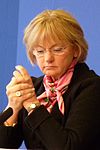Danish general election, 2007
|
|
||||||||||||||||||||||||||||||||||||||||||||||||||||||||||||||||||||||||||||||||||||||||||||||||||||||||||||
|---|---|---|---|---|---|---|---|---|---|---|---|---|---|---|---|---|---|---|---|---|---|---|---|---|---|---|---|---|---|---|---|---|---|---|---|---|---|---|---|---|---|---|---|---|---|---|---|---|---|---|---|---|---|---|---|---|---|---|---|---|---|---|---|---|---|---|---|---|---|---|---|---|---|---|---|---|---|---|---|---|---|---|---|---|---|---|---|---|---|---|---|---|---|---|---|---|---|---|---|---|---|---|---|---|---|---|---|---|
|
||||||||||||||||||||||||||||||||||||||||||||||||||||||||||||||||||||||||||||||||||||||||||||||||||||||||||||
|
All 179 seats to the Folketing 90 seats were needed for a majority |
||||||||||||||||||||||||||||||||||||||||||||||||||||||||||||||||||||||||||||||||||||||||||||||||||||||||||||
| Turnout | 86.6% | |||||||||||||||||||||||||||||||||||||||||||||||||||||||||||||||||||||||||||||||||||||||||||||||||||||||||||
|
||||||||||||||||||||||||||||||||||||||||||||||||||||||||||||||||||||||||||||||||||||||||||||||||||||||||||||
|
||||||||||||||||||||||||||||||||||||||||||||||||||||||||||||||||||||||||||||||||||||||||||||||||||||||||||||
General elections were held in Denmark on 13 November 2007. The election allowed prime minister Anders Fogh Rasmussen to continue for a third term in a coalition government consisting of the Liberals and the Conservative People's Party with parliamentary support from the Danish People's Party.
According to the Constitution of Denmark, Denmark is governed according to the principle of negative parliamentarism, meaning that while a government doesn't need the majority of seats in parliament, it must never have a majority of seats against it in a vote of no confidence. Before the ongoing elections, this was relevant since the government, consisting of the Conservative People's Party and the Liberals did not have a majority of seats, but depended on the support of the Danish People's Party. Early opinion polls showed that neither a right-wing or a left-wing government could gather enough seats to be in government without the support of the newly established New Alliance. This caused a lot of interest, since New Alliance had stated that they would first give the government the opportunity to propose a programme for government, but that they would not definitely support a right-wing government prior to seeing how many of their political agendas they could work together on. Many people were unsure how this would be possible, since New Alliance was originally formed to limit the influence of the Danish People's Party, without whom a right-wing government did not seem possible in opinion polls. After the elections, however, it was clear that New Alliance did not get enough seats in parliament to break the previous right-wing majority.
...
Wikipedia








